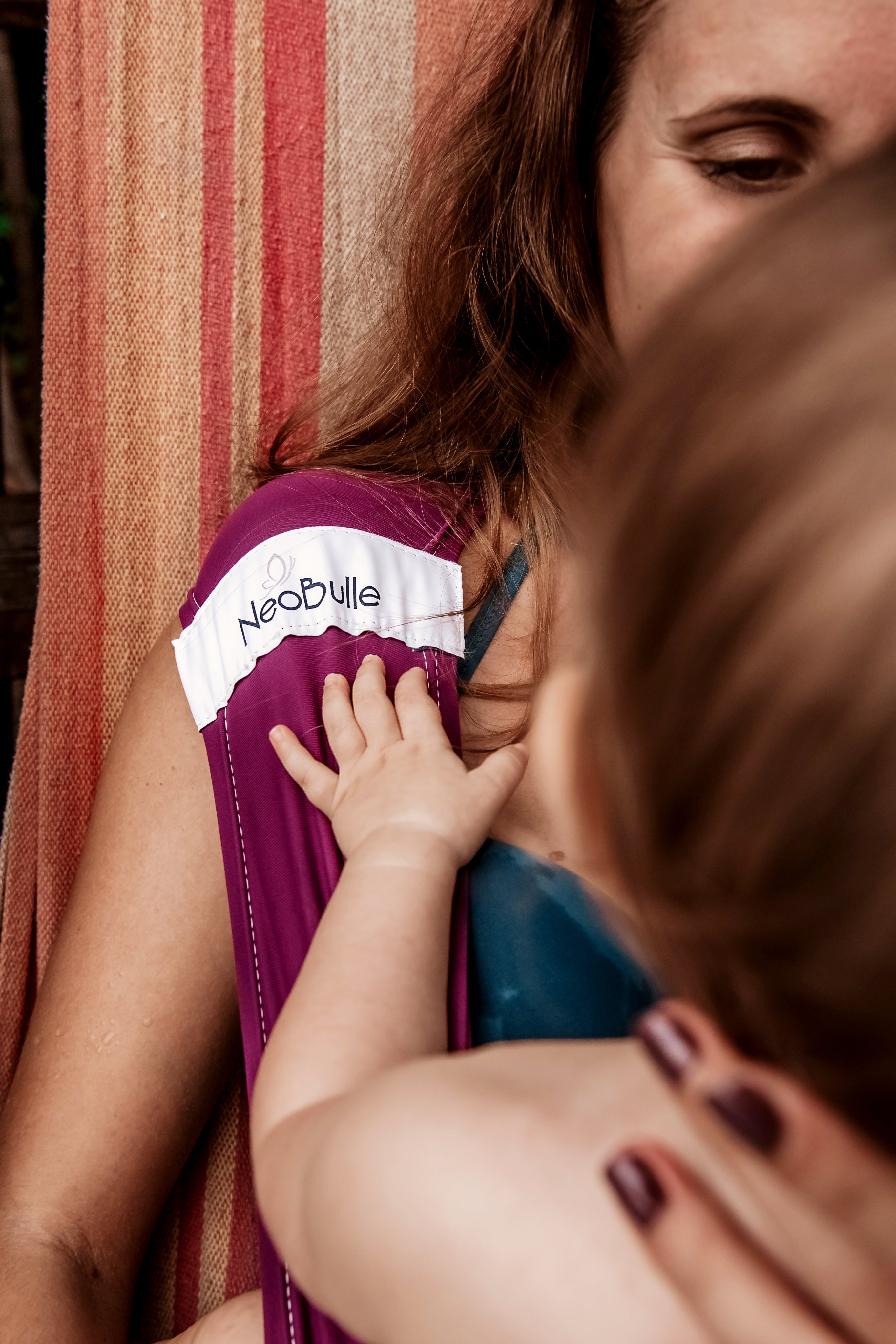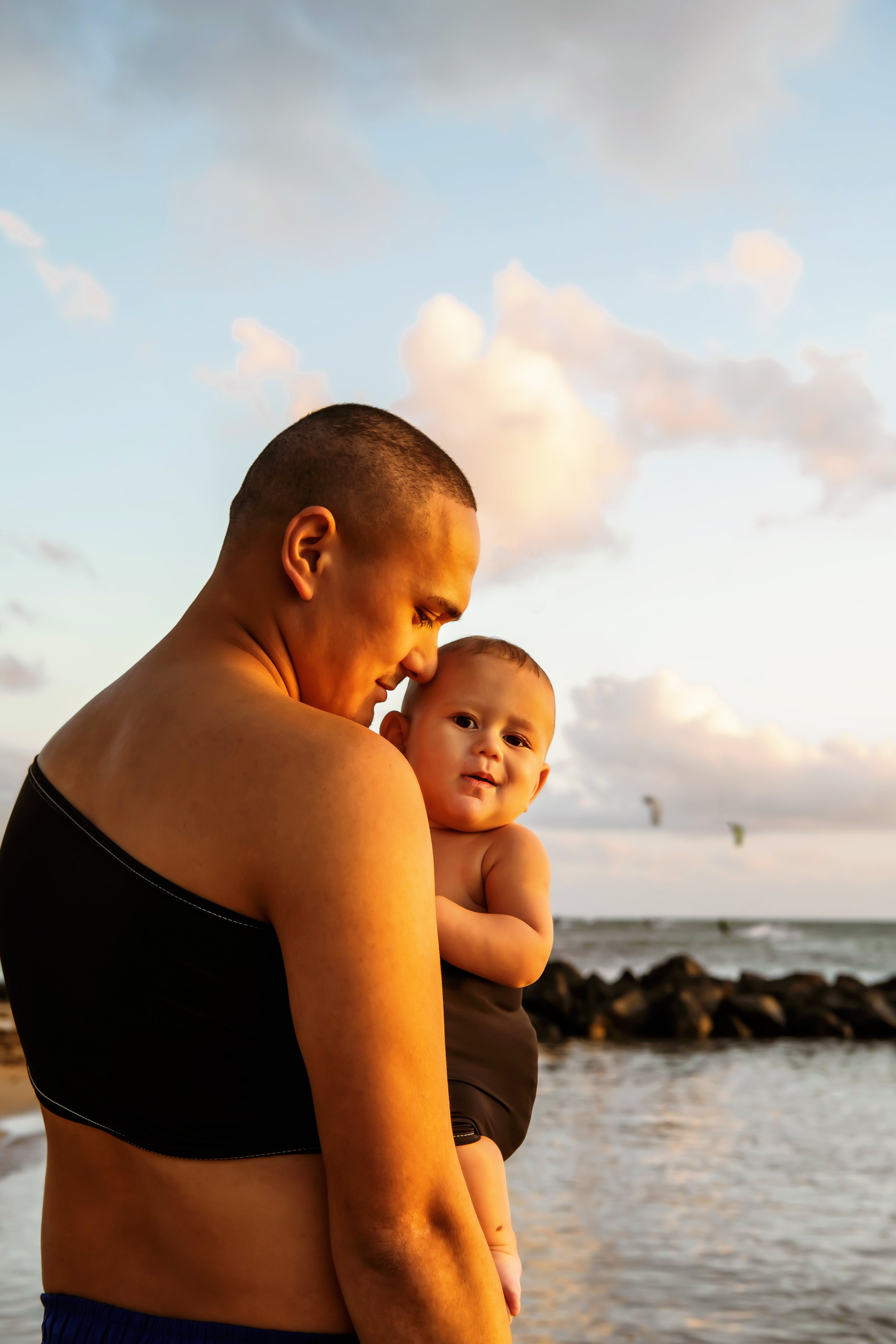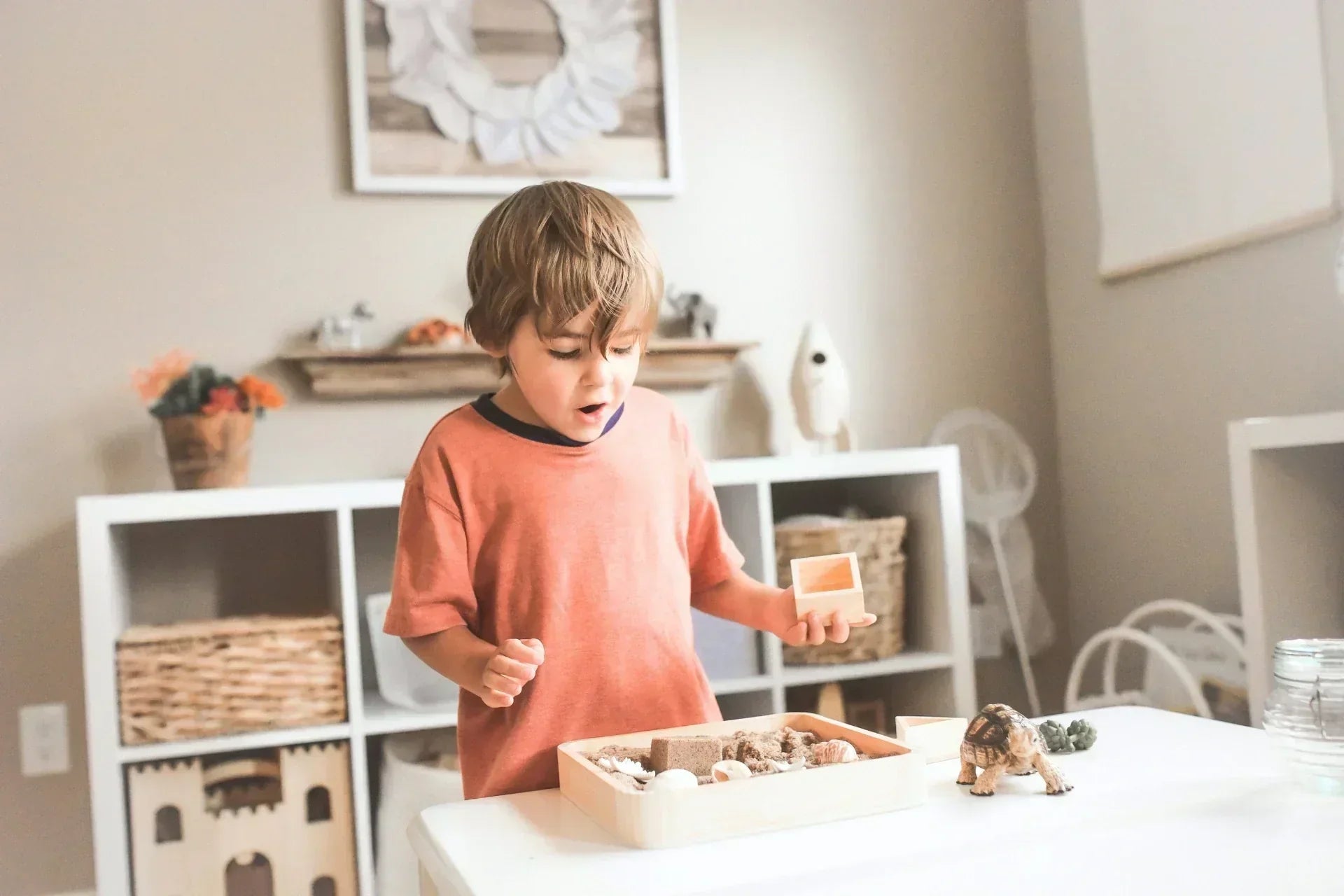When we support families in their practice of babywearing, one question comes up quite regularly:
How long can you carry your baby?
An important question that could be answered very simply: “No more than 24 hours a day.”
So.
End of the article and goodbye?
Let’s take the time to go into a little more detail!
“Not too long or it will damage his back.”
Just like with infant carriers, where it is often recommended to use them for short periods, we often hear about limiting carrying times during the day, so that the baby can move around, for example, or not "damage" their back.
The reality is much more nuanced . While it is true that a well-adjusted baby carrier can severely restrict the child's mobility, it is not necessary to remove them from it after 30 minutes.
First of all, let's remember that the newborn naturally has a "rounded" spine ( total kyphosis ), and that in fact a position with a rounded back only follows the natural shape of the spine. There is no study showing that normal use of a car seat or a carrying system (physio or not, sling or not) would "damage" a baby's back. This so-called 30-minute maximum rule is more of an urban legend than real scientific information.

In a car seat, the baby is completely constrained. This is normal: the car seat is designed for car travel and the purpose is to protect him in the event of an impact. His head in particular is stabilized by the reinforcements, so the child is installed in the same position for the entire duration of the trip. It is recommended during journeys to take short breaks every 2 hours to take him out of the car seat so that he can move around a little, and obviously it is not recommended to leave him in there for several hours a day every day without need (in particular to limit the problems of deformation of the skull)!
In a baby carrier the situation is significantly different:
- The head is not supported and its mobility is preserved , which limits the risks of seeing a deformation of the cranium appear over a long period of time.
- The wearer's body is not static and forces the child to make many micro-adjustments in posture during the carrying time.
The carrier-carried couple constitutes a dynamic system : the carrier moves, forcing the child to move a little as well (voluntarily or not).
The baby moves, requiring the wearer to reposition it.
And finally, the wearer will regularly and quite intuitively move the material around himself and his baby to vary the support.
We will advise, in the same way as in the shell, to offer a short break every 2-3 hours, so that the child can wriggle a little and limit the effects of stasis, but in general it is good: it is at about the same frequency that you will have to feed him, hydrate him, or change his diaper. And if from time to time baby gives you his best nap and we go a little beyond 3 hours, it is not dramatic!
And what about motor skills?



After the spectre of the fear of a deformed back comes that of the fear of the child being carried who will therefore never be able to walk.
It is important to distinguish between the different key times of a baby's day: the toddler alternates between phases of sleep, feeding, and quiet waking. The younger the child, the longer the sleep time is compared to the quiet waking time; the older the child, the more waking time increases.
During sleep time, carrying the child will have no impact on their motor development. During a quiet waking time, however, we can offer time on the floor on a mat so that they begin to mobilize their body. The big subtlety lies in the fact that time on the floor is only of interest if the baby has previously been sufficiently secure to accept being placed and to concentrate their energy on mastering their movements and postures. Otherwise, they will have to draw on their resources to manage their "stress".
At the same time, on the moving body of the wearer, the child feels his muscles move, unconsciously integrates how to perform this or that movement. His inner ear is solicited and all this contributes to the proper development of the vestibular system , guaranteeing the balance necessary for the acquisition of walking, for example.
Babywearing proves to be a real complementary support for the motor development of the toddler, allowing the acquisition of essential skills and providing a secure environment. As the child grows, the motor times will lengthen to the detriment of carrying times.
“Yes, but then we can’t keep it on all the time?”
Indeed no.
Each child will have their own specific needs: some will have a very strong need for closeness and security and will spend their first weeks literally glued to the body of a key adult (parents, grandparents, childminder, etc.), while others will very quickly show their preference for the play mat.
When you have a very demanding baby, it's important to keep in mind that it won't last forever. Promise: no 16-year-old is asking to be carried to school! :)
Most often, the switch occurs around 3 months: he begins to be a little more interested in his environment and naturally to accept a little more time on the ground. The current state of knowledge tends to show that the more we have responded to the need for reassurance , the more the child will then be autonomous and independent . No "baby with capricious arms" on the horizon!
The limitations of babywearing will mainly be related to safety rules . For fairly obvious reasons, it is strongly recommended not to sleep with a baby carried in a system due to the increased risk of suffocation.
No sports either (they will probably like trampolining and skiing, but later), nor cycling or any other activity presenting an increased personal risk.
On the other hand, with a little practice , you will probably find yourself going to the toilet while carrying your baby (we go through milestones as parents...).
In short, the recommended carrying times mainly follow common sense rules : follow the needs (of the baby or yours), take regular short breaks , let the child explore his body when he shows the desire, and do not adopt risky behaviors.
Don't hesitate to trust yourself and your baby !





